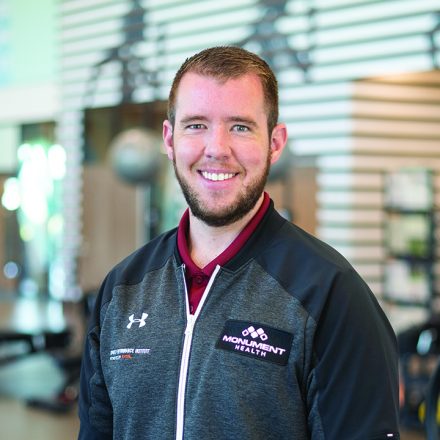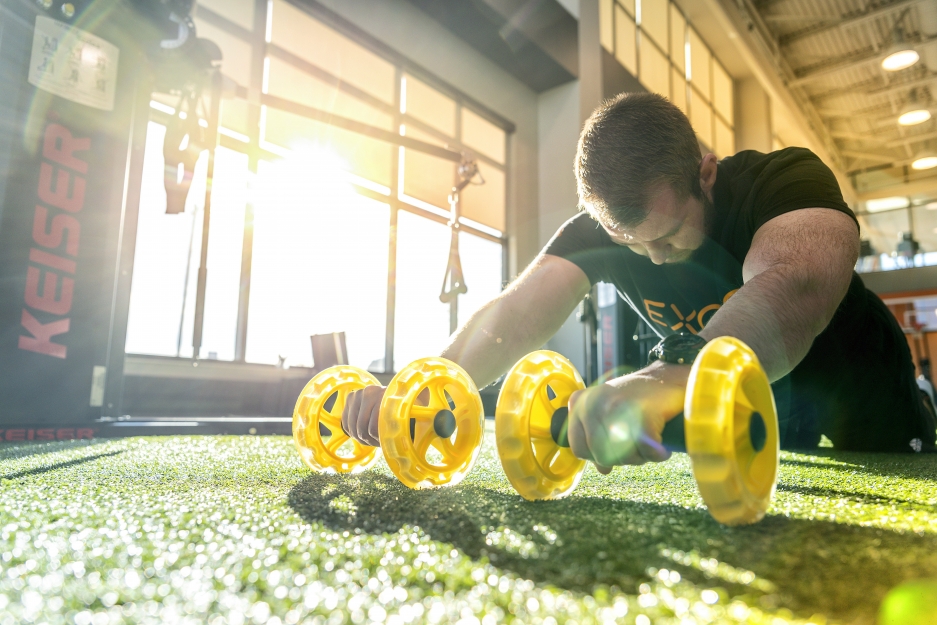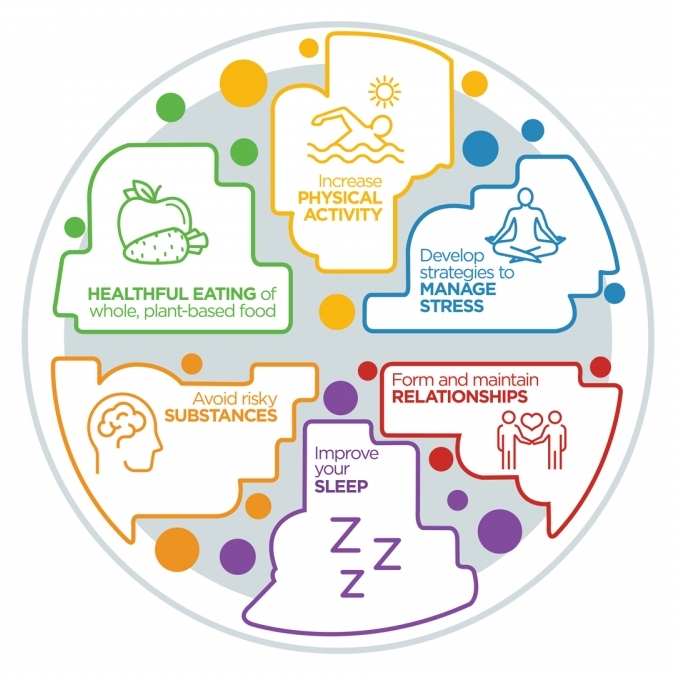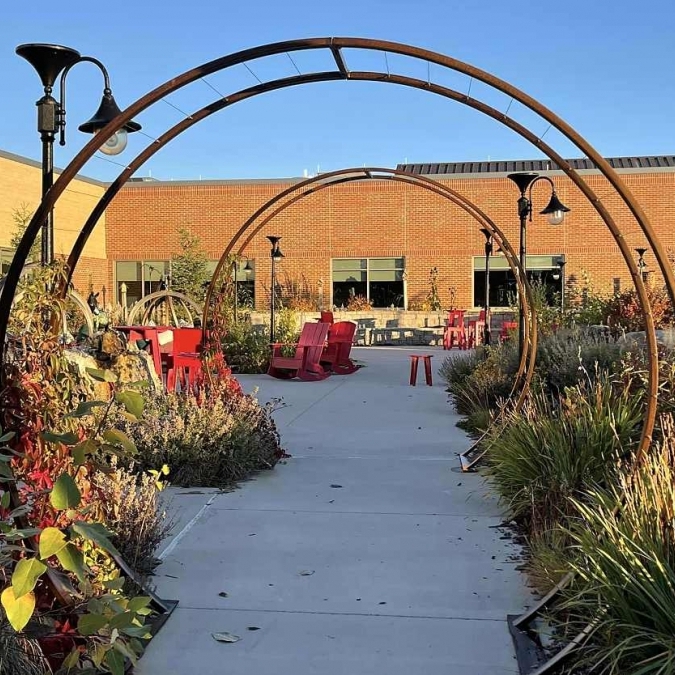This past year has caused many people to rethink their physical fitness regimens. Some have limited their use of gym equipment to reduce the need for cleaning, while others have shifted to completely at-home workouts. Now that nicer weather is on the horizon, exercising outside lets people reap the benefits of fresh air and sunshine.
The Trend on the Trail
Walking, running and hiking are all popular in the Black Hills, and are easy activities to add to a daily routine. Trail running is particularly popular, and although it has been around for some time, the sport has become more prevalent in the region. Kyle Taylor, a Performance Coach at Monument Health Orthopedic & Specialty Hospital powered by EXOS, says, “Trail running has been around as long as people have been running, but now there are several races and events where trail running is the mode of competition.” The terrain around the Black Hills region is wellsuited for this type of activity, with local running clubs hosting several events throughout the year. Heading straight to the trail might not be the best starting place for everyone, however. Adding a new activity to your fitness routine should always be done in a measured way to allow your body to adapt. To start out, Kyle says, “I utilize something we call interval training; run at an easy pace you can maintain for 20-30 seconds and then walk for a minute or so and repeat. Slowly increase your pace or time/distance as you feel prepared to do so.” The key is to listen to your body, and not try to push too hard or through too much pain. You should expect some muscle soreness, but if something hurts, it’s an indication that you need to slow down.

Kyle Taylor is a Performance Coach at Monument Health Orthopedic & Specialty Hospital powered by EXOS in Rapid City. As a Performance Coach, he works with people on an individual level to find a program that best suits their needs, and also leads group circuit training, interval training and gym classes. He believes there’s a connection between physical fitness and mental wellbeing, especially through the sense of accomplishment he sees when people complete a workout session. For Kyle, the biggest reward is seeing the progress people make toward their goals. Whether it’s lifting a heavier weight, shedding pounds or being able to comfortably do an exercise that used to cause pain, he’s excited to help people reach their goals.
The Value of Strength
Conventional advice would have us believe that being a better runner simply means running more. There’s a component to running most people don’t consider, however: strength training. When it comes to running, Kyle says, “Feet inherently need stability and strength, and there are several exercises that you can do to strengthen them such as various heel and toe walks, and even calf raises.” Thighs and hips play a large role in stability when walking or running, and should also be the focus of strength training days. Finding the balance between strength training and cardio depends on each individual and their personal fitness objectives. Kyle recommends, “a blend of both is ideal, but the frequency of each type of exercise will vary based on your goals, what you enjoy, etc.” Whether you’re a seasoned runner or hitting the trail for the first time, strengthening your feet and core will help you tackle your fitness objectives.
When picking out a new pair, Kyle says, “consider your own comfort, if you’re uncomfortable while running, it is a routine you will likely have a tough time sticking to.” In order to find a shoe that fits comfortably and supports you correctly, it’s best to talk to a professional. “Feet have a little bit of an identity, and we can help analyze your gait and reveal which part of your foot you like to load up, if you have any kind of arch collapse or any other challenges. Essentially, we can tell if you need more support and where,” Kyle says. Once you know more about your gait, experts at local sports stores can help you find a shoe that will give you the support you need.
Get Started Safely
When beginning a new routine, it can be easy to cause injury. Physical Therapist Alicia Porsch says, “start out with just a few minutes at a time and then add in 30 seconds to one minute each day. By starting like this you are creating the habit of walking and are more likely to continue without overdoing it. If somebody goes out and walks for 30 minutes on the first day, they may be too fatigued to continue the remainder of the week.” Starting slowly and deliberately increasing your duration is more likely to build a lasting and safe fitness routine.
How to Prevent Injury
Running injuries are more common due to the higher impact, but walking can present similar problems. The most common injuries Alicia sees are patellofemoral pain, which is pain centralized around the kneecap. She says, “avoiding injury should be a multifactorial approach: make sure you don’t increase the intensity, frequency or duration too quickly; follow a strengthening and stretching routine consistently; properly fuel your body and ensure that you are taking proper rest days. This includes seven to nine hours of sleep at night.” Giving your body the best opportunity to recover helps prevent soreness, but also makes sure you’re ready for the next workout. Alicia and Kyle both recommend adding a stretching routine to your cooldown after running. Using soft tissue tools such as a foam roller or a massage stick can help relieve muscle tightness, soreness and inflammation. In addition to a good night’s sleep and stretching, Alicia emphasizes good nutrition. Focus on getting the proper amount of nutrients after a workout to help recover, but also fuel your body with well-balanced meals and snacks all day.

Alicia Porsch is a Physical Therapist practicing at Monument Health’s Belle Fourche Clinic. She completed her undergraduate degree at Black Hills State University and received her doctorate of physical therapy at the University of South Dakota in 2012. Alicia ran indoor track and cross country at BHSU from 2005– 2009. Alicia focuses on helping patients reach their goals by balancing exercise, nutrition, and rest. She starts each patient on a program they can incorporate into their daily routine before moving on to more structured exercises. Each person is different, and Alicia says helping her patients achieve their goals — whether that means helping them climb a flight of stairs or Black Elk Peak — is the best part of her job. As an avid runner herself, she knows how important it is to be able to have an active and healthy lifestyle.






